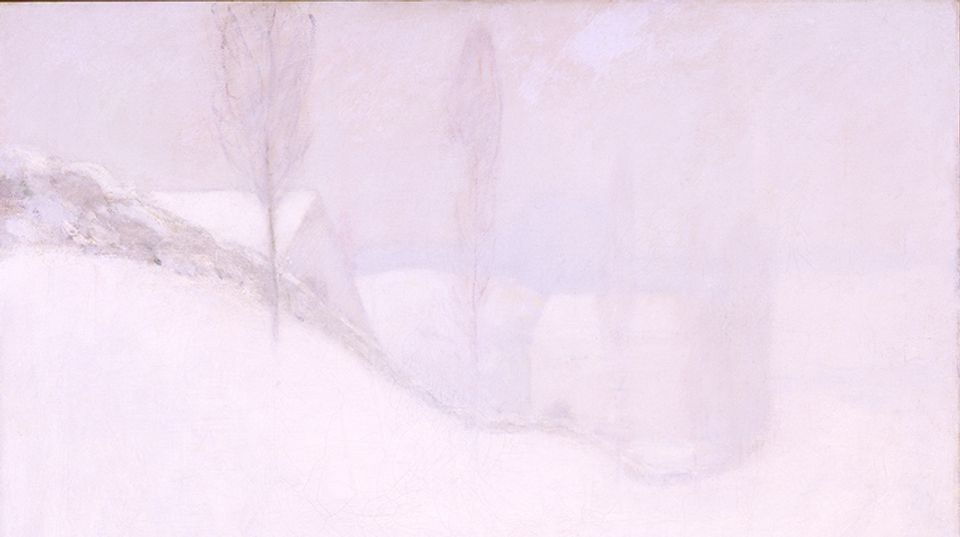
Summertime at the Smithsonian American Art Museum usually means a crop of college and graduate students to assist our scholars with research and exhibition projects. This summer, Orquidea Morales, a graduate student in American Culture Studies at the University of Michigan, was paired with E. Carmen Ramos, the museum's curator for Latino art. Below are some of Orquidea Morales’ thoughts about Raphael Montañez-Ortiz’s 1958 recycled film Cowboy and “Indian” Film, which will be the earliest work included in our upcoming exhibition Our America: The Latino Presence in American Art, opening October 25, 2013. Our America will feature works by other artists that re-frame significant American historical events from a Latino perspective. This is the latest post in an occasional series highighting some of the exciting artworks that will be featured.
In the late 1950s and early 1960s, artists from around the world began making art by reworking existing films and using other moving image technologies like video. One pioneer of this new art form is Raphael Montañez-Ortiz. Born in 1934 in Brooklyn, New York, Montañez-Ortiz attended Pratt Institute in the 1960s. During this time he also studied Native American cultures, in part motivated by a desire to explore his own indigenous heritage. In the mid-1960s Montañez-Ortiz became a leading figure in the avant-garde movement of Destructivism. This little known movement consisted primarily of the destruction of objects by artists, usually in a staged public performance. Raphael Montañez-Ortiz typically destroyed household objects like chairs, mattresses and perhaps most famously pianos. At the Destruction in Art Symposium in London in 1966, he performed seven destruction acts and screened several "recycled" films. For me, the "recycled film" is one of the most interesting concepts that evolved out of this movement because it allows artists, some of whom might not have access to film-making technology, to alter existing films and create something new that plays with genre and questions stereotypes.
In his Cowboy and "Indian" Film, Raphael Montañez-Ortiz literally de-constructs the 1950 film Winchester ’73 directed by Anthony Mann and starring James Stewart and Shelley Winters. The original film was titled after the rifle that had "won the West" and is a classic example of the Western genre in American film. This genre has historical roots in the late 1800s early 1900s, and relates to the idea that the United States was inevitably destined to expand across the continent. To create his work, Montañez-Ortiz obtained copies of the film and then used a tomahawk to splice it into pieces. As if performing a Native American ritual, the artist placed the chopped filmstrip pieces into a "medicine bag," shook its contents and chanted as he re-constructed the film irrespective of its original order. Once projected, Cowboy and "Indian" Film is a blur of moving images, some of which are backwards and upside down. A few recognizable instances include a close up of James Stewart on his horse and a Native American holding a weapon, possibly the rifle from the title. Similarly, the sounds projected with these images match the frenzied disjointed pace of the film.
I am fascinated by how both the film and the ritualistic process through which it was made relate to Montañez-Ortiz’s lifelong engagement with indigenous cultures. Originally, Winchester ’73 began with the title card "This is the story of the Winchester Rifle Model 1873. The gun that won the West. To cowman, outlaw, peace officer or soldier, the Winchester '73 was a treasured possession. An Indian would sell his soul to own one." Through his deconstruction ritual, Montañez-Ortiz questions the vilification of Native Americans in Western films. In a 1996 interview, when asked about his use of "indigenous methods," Montañez-Ortiz responded that for him it is not about ethnocentrism but rather about "going to the root and seeing that there is a web—a net of indigenous culture—on the planet that attaches all people. I am faithful to those indigenous roots and to deconstructing Eurocentric concepts and objects." By literally inserting the tomahawk into Winchester ’73, Raphael Montañez-Ortiz completely changes the framing of the film thereby creating his own production where Native Americans don’t need to sell their soul. Through deconstruction, Montañez-Ortiz physically and conceptually changed how we as an audience think about this Western.

















